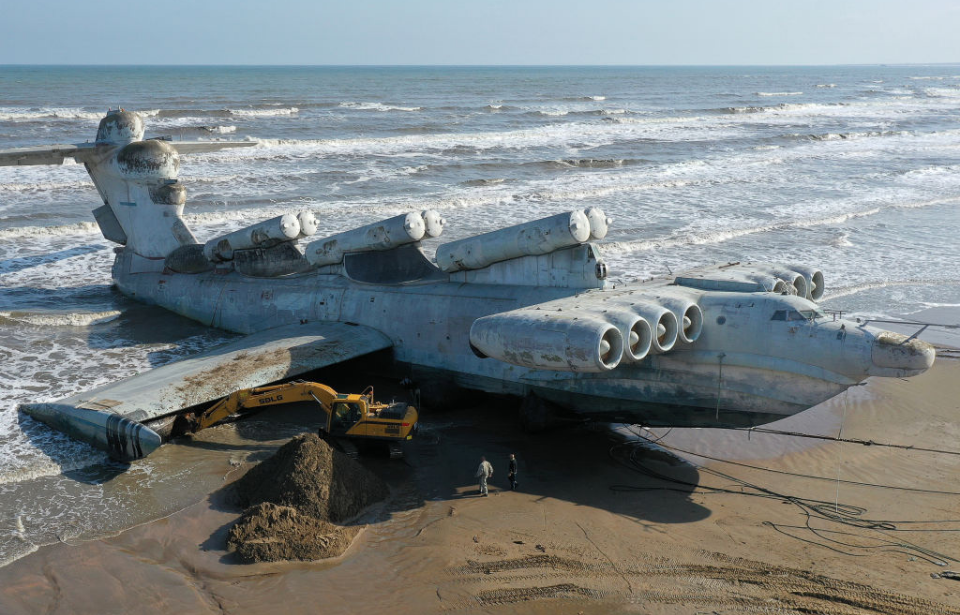There have been some really unusual military vehicles built over the course of history, but none have amazed us more than the Lun-class MD-160. A form of Ground Effect Vehicle, this ekranoplan is a unique aircraft-ship hybrid that could have played a pivotal part in the Cold War, had it not been for the collapse of the Soviet Union.
Is the MD-160 an airplane or a ship?
The ekranoplan was a form of Ground Effect Vehicle, meaning it glided over water without ever touching it. To many, it appears to be a hybrid between an airplane and a sea vessel. The International Maritime Organization (IMO) actually classifies it as a ship, despite the fact it flies above the surface of the water at a height of one-to-five meters.
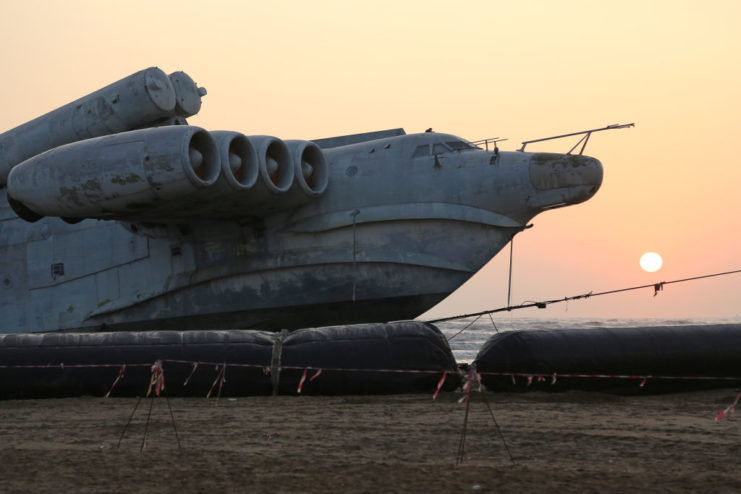
Ground Effect Vehicles are known for taking advantage of the aerodynamic principle “ground effect,” meaning they derive their speeds from their ability to glide over bodies of water. They are typically difficult to detect via radar, due to their proximity to the water, and this combination of stealth and speed made the concept especially appealing to the Soviet Union.
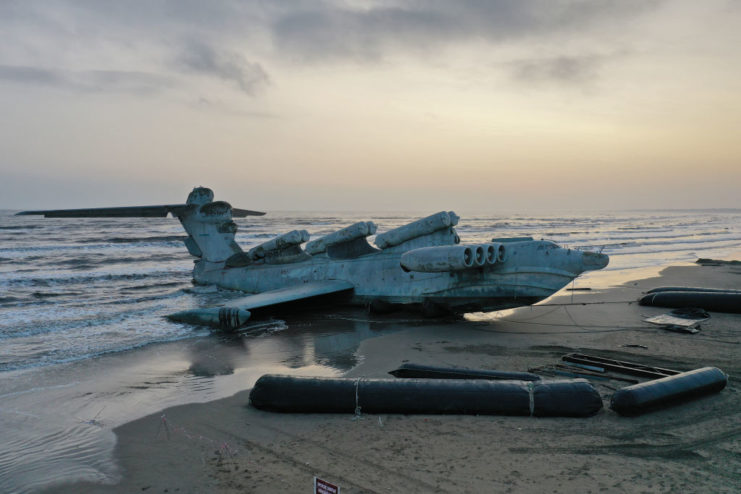
The USSR experimented with variations of the ekranoplan throughout the course of the Cold War, which the Soviet Navy nicknamed the “Caspian Sea Monster,” due to its deployment in the body of water between the country and Iran.
The Lun-Class MD-160
The Lun-class of ekranoplan was one of the last to be designed under the USSR’s Ground Effect Vehicle program. It was longer than an Airbus A380 Superjumbo airliner and nearly as tall, with a top speed of 550 kilometers per hour. This was due to its eight Kuznetsov NK-87 turbofans mounted on forward canards, each of which produced 127.4 kN of thrust.
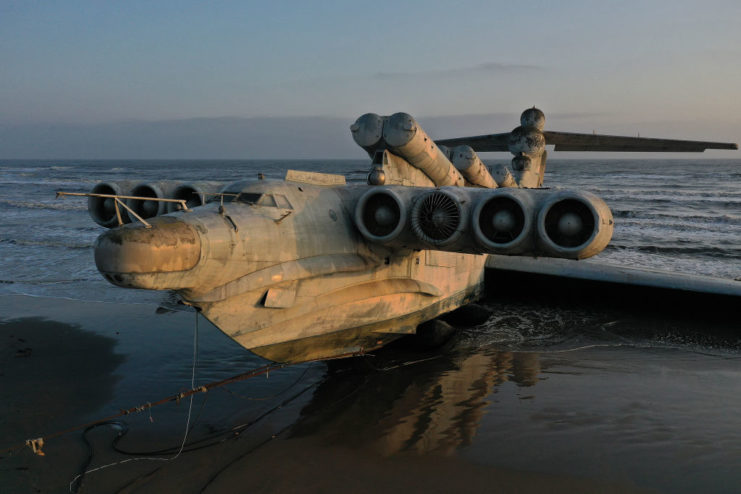
Able to takeoff and land in stormy conditions thanks to its flying boat hull, the intention was for it to conduct lightning seaborne attacks. It was equipped for anti-surface warfare, with six P-270 Moskit guided missiles held in launchers situated in pairs along the dorsal surface of the fuselage. It also had advanced tracking systems mounted to its nose and tail.
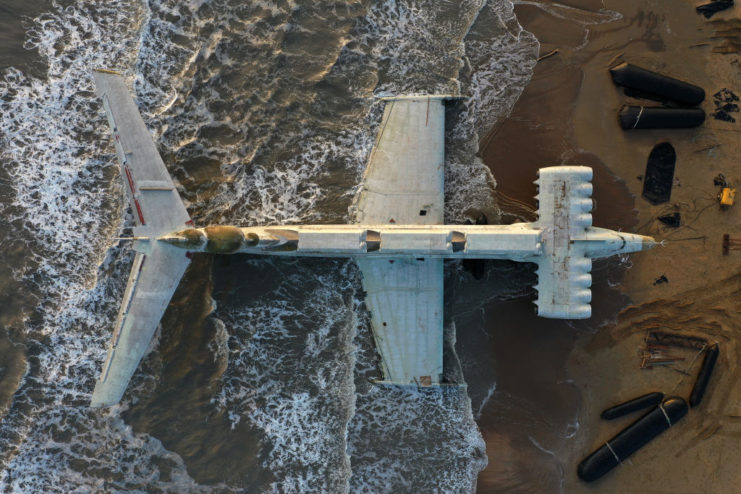
The first and only Lun-class ekranoplan to reach completion was the MD-160, which entered service with the Soviet Navy Caspian Flotilla in 1987. There was a second craft – unnamed and assigned to rescue and supply missions – that was abandoned in the early 1990s, following the cancellation of the program and the collapse of the Soviet Union. It was around this time that the MD-160 was also removed from service.
Future as a tourist attraction
The MD-160 was stored at Kaspiysk Naval Base, where it sat for over three decades. In July 2020, it was moved from the location to the ancient Russian city of Derbent, some 100 kilometers away. The plan was to make it the main attraction of “Patriot Park,” a yet-to-be-built military museum and theme park.
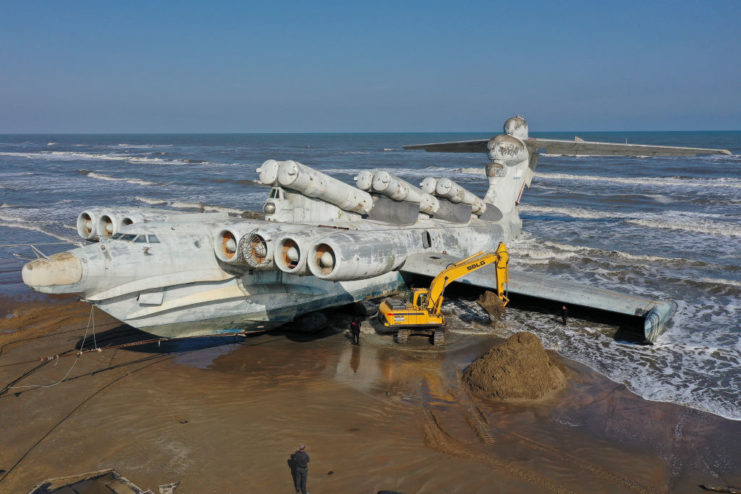
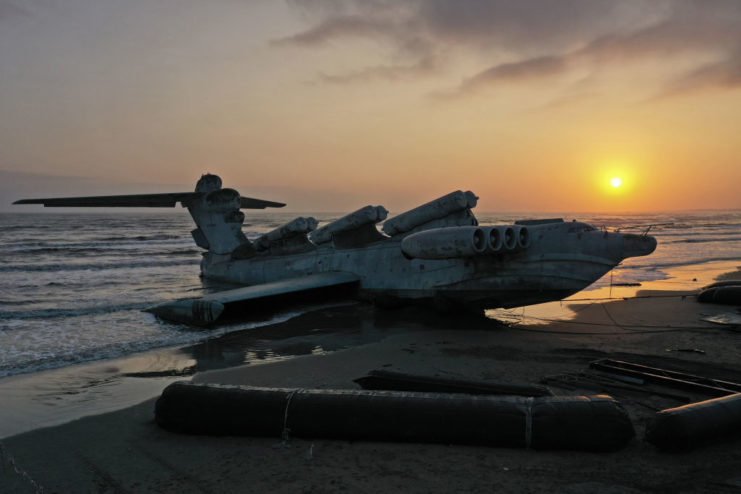
More from us: The Douglas A-1 Skyraider: The Best Attack Plane Ever Made
The effort to move the craft took 14 hours and included the use of rubber pontoons, three tugs and two escort vessels, which slowly maneuvered it along the shore of the Caspian Sea. It is here that it’s remained, waiting for the museum to be built up around it.
